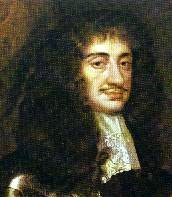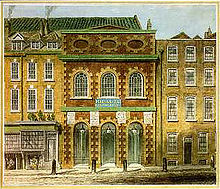Restoration comedy

As Restoration comedy is called the English comedies of the Restoration period . They emerged from 1660 after public theater performances were allowed again after 18 years of being banned. The reopening of the theaters was accompanied by a change in the plays and performance practice. The restoration comedies were sexually very permissive, which was encouraged both by King Charles II personally and by the permissiveness of his court. The heyday of the restoration comedy ended around 1700 when moral concerns and changed public tastes led to its decline.
Authors
The restoration comedy’s main writers include Charles Sedley , John Dryden , William Wycherley , George Etherege , Aphra Behn (the first professional British playwright), Thomas Shadwell , Thomas Southerne and, from the 1690s, William Congreve and John Vanbrugh .
Important restoration comedies (selection)
- Aphra Behn, The Rover (1677)
- William Congreve, The Way of the World (1700)
- John Dryden, Marriage à la Mode (1672)
- George Etherege, She Would If She Could (1668) and The Man of Mode (1676)
- George Farquhar, The Beaux 'Stratagem (1707)
- Edward Ravenscroft, The London Cuckolds (1681)
- Sir Charles Sedley, The Mulberry-Garden (1668) and Bellamira: or, The Mistress (1687)
- Thomas Shadwell, The Sullen Lovers (1668) and The Virtuoso (1676)
- Thomas Southerne, The Wives' Excuse (1691)
- Sir George Vanbrugh, The Provoked Wife (1697)
- William Wycherley, The Gentleman Dancing-Master (1672) and The Country Wife (1675)
Performance practice
The performances attracted a large audience from all social classes and were characterized by references to current events, lively actions and the first professional actresses. Up until this point in time, female roles had always been represented by men.
So-called trouser roles were part of almost a quarter of the comedies written during the Restoration period. In these trouser roles, the actresses appeared on stage in male clothing - they wore the tight-fitting, knee-length trousers that were the standard clothing of their male contemporaries. Mostly they represented quick-witted women who for some reason had to dress up as a man or wanted to do the things that were only open to a man.
Successful actors and actresses of the time included Nell Gwyn , the mistress of Charles II, Elizabeth Barry , Anne Bracegirdle , Thomas Betterton and Colley Cibber .
criticism
One of the main critics of the restoration comedy is Jeremy Collier , who violently attacked it in his 1698 work A Short View of the Immorality and Profaneness of the English Stage . As an example of his accusation of immorality and godlessness, he used the comedies Congreves and Vanbrughs.
General expenses
- Four Restoration Marriage Plays . Ed. Michael Cordner. Oxford and New York, 1995.
- Restoration comedy . Ed. A. Norman Jeffares. 4 vols. London, 1974.
- Restoration Comedies . Ed. Dennis Davison. London, Oxford, and New York, 1970.
literature
- Annette Pankratz, value repertoires of the English restoration comedy . Essen, 1998.
- Derek Hughes, English Drama 1660-1700 . Oxford, 1996.
- Warren Chernaik, Sexual Freedom in Restoration Literature . Cambridge, 1995.
- JL Styan, Restoration Comedy in Performance . Cambridge, 1986.
- Robert D. Hume, The Development of English Drama in the Late Seventeenth-Century . Oxford, 1976.
